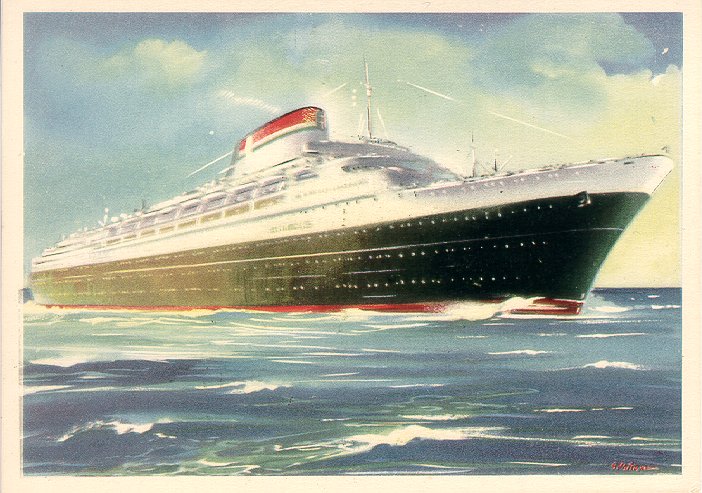The ill-fated Andrea Doria was built for Italia (the Italian Line) by
Ansaldo of Genoa. Launched in 1951, she made her maiden voyage from
Genoa to New York on 14 January 1953.
Late on the evening of 25 July 1956, southwest of the Nantucket
Lightship, Andrea Doria (approaching New York) and the Swedish American
Line's Stockholm (leaving New York) were closing in on each another.
Although they were only a few miles apart, Andrea Doria was sailing
through a thick fog, while Stockholm was traveling under a clear,
moonlit sky. A little before 11 pm each ship picked up the other on
radar but each concluded that the other was closer to the shore. As
they neared one another, each ship turned to give the other more room to
pass, but they both turned seaward. The result was disastrous: Andrea
Doria's new course took her directly across Stockholm's bow and she was
rammed broadside.
Stockholm cut through seven of Andrea Doria's fourteen decks just aft of
the bridge, killing 46 people on the Doria and five on Stockholm. Within
minutes, Andrea Doria was listing to starboard more than twenty degrees,
which was beyond her design capacity. Knowing that his ship was doomed,
Captain Piero Calamai ordered an evacuation. Only half of the ship's
lifeboats were available -- the port-side boats were unusable due to the
ship's list -- but with assistance from Stockholm, the French Line's Ile
de France and several other ships, all of Andrea Doria's surviving
passengers and crew were rescued.
Throughout the night Capt. Calamai remained on board, still trying to
save his ship, but by 5:30 am the starboard list exceeded forty
degrees and the remaining crew refused to leave without him, so Capt.
Calamai finally left the ship himself. Andrea Doria finally turned on
her starboard side and sank at 10:09, bow first, in about 250 feet
(75m) of water.
Sources: Bonsor's North Atlantic Seaway; Ballard and Archbold's Lost
Liners; Watson's Disasters at Sea, 2nd ed.

